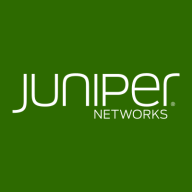

Pico Corvil Analytics and Marvis Virtual Network Assistant are two solutions competing in network analytics and management. Marvis Virtual Network Assistant appears to have the upper hand due to its advanced AI features and quicker ROI.
Features: Pico Corvil Analytics provides real-time data visibility, comprehensive analytics, and extensive traffic flow understanding. Marvis Virtual Network Assistant shines with its AI-driven issue resolution, proactive network management, and strategic edge in handling complex environments.
Room for Improvement: Pico Corvil Analytics could improve by enhancing AI capabilities, reducing integration complexities, and lowering its setup costs. Marvis Virtual Network Assistant may benefit from expanding raw data analysis, refining user interface navigation, and strengthening detailed reporting features.
Ease of Deployment and Customer Service: Pico Corvil Analytics often needs support for optimal configuration when integrating with existing networks. Marvis Virtual Network Assistant stands out with streamlined deployment, AI-enhanced customer support, and a focus on reducing setup time through efficient processes and responsive assistance.
Pricing and ROI: Pico Corvil Analytics entails significant initial setup costs with a focus on high-value analytics to justify ROI. Marvis Virtual Network Assistant offers a favorable cost-benefit ratio, highlighting a quicker ROI thanks to its automated management systems and lower initial investment. Its balanced cost and functionality appeal to budget-conscious buyers.
| Product | Market Share (%) |
|---|---|
| Marvis Virtual Network Assistant | 0.3% |
| Pico Corvil Analytics | 0.5% |
| Other | 99.2% |


| Company Size | Count |
|---|---|
| Small Business | 2 |
| Midsize Enterprise | 1 |
| Large Enterprise | 6 |
Marvis is the first network assistant in the industry to bring conversational AI to networking, transforming the way IT teams interact and engage with enterprise networks. In the era of AIOps, Marvis delivers streamlined operations, simplified troubleshooting, and remarkable user experiences.
We monitor all Network Monitoring Software reviews to prevent fraudulent reviews and keep review quality high. We do not post reviews by company employees or direct competitors. We validate each review for authenticity via cross-reference with LinkedIn, and personal follow-up with the reviewer when necessary.